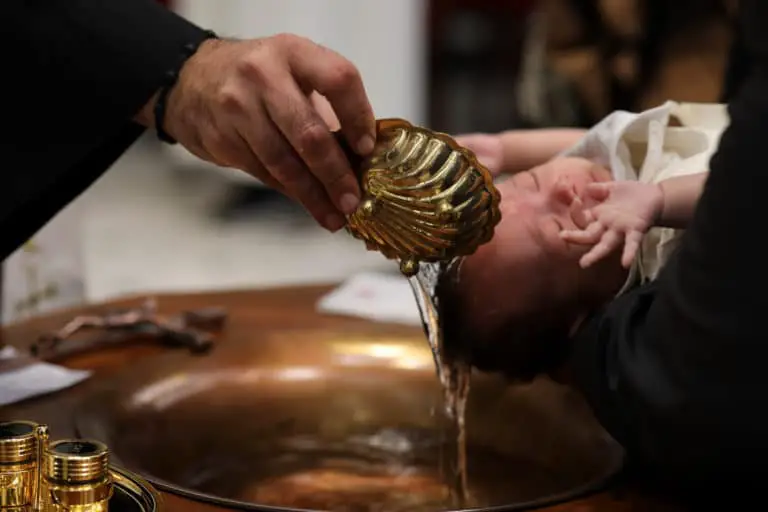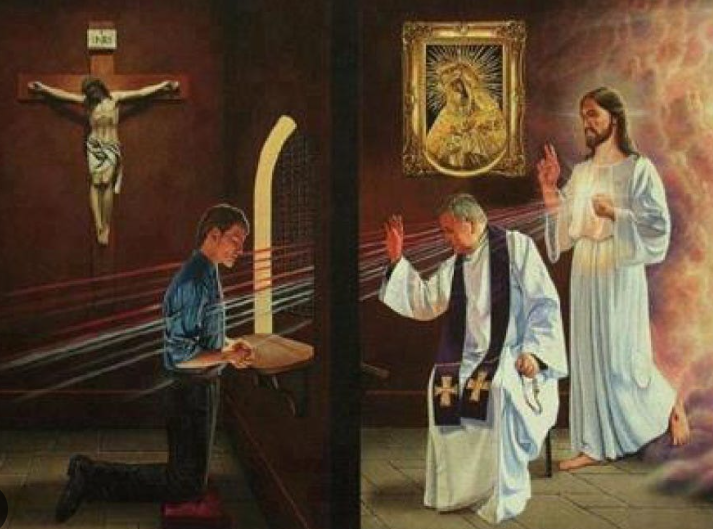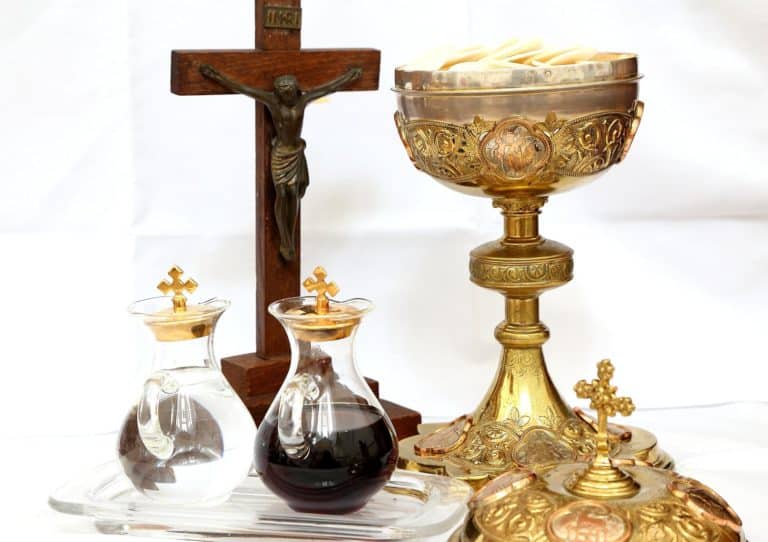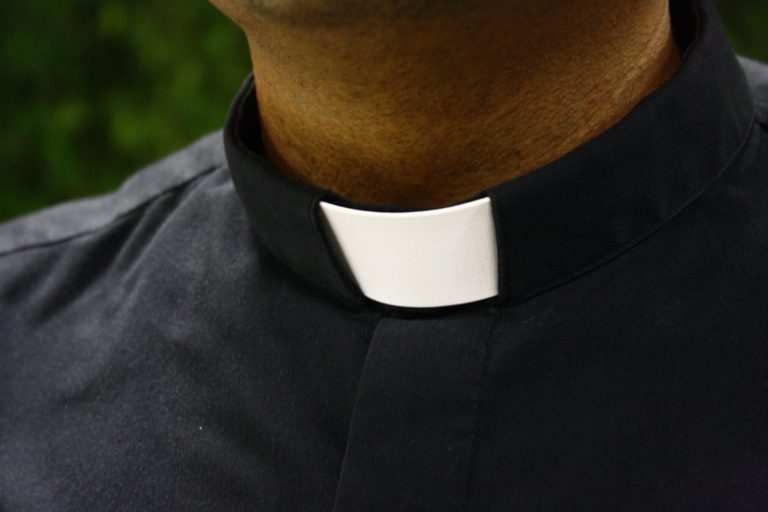What is the Sacrament of Marriage?
The Sacrament of Marriage forms part of the Sacraments of Service, the other is the Sacrament of Holy Orders and was instituted by God at the creation of a helper for man (Genesis 2:18–25). Through the fall of man into sin, called Original Sin, marriage became corrupted by society prior to being lifted again to the level of Sacramental Marriage once again by the author of life and the man God, Jesus Christ (St Matthew 19: 3-9). Sacramental Marriage differs from Natural Marriage.
The Sacrament of Marriage raises the dignity of Natural Marriage which is defined as a contract where one man and one man, acting of their free will, enter freely a union with the right to perform acts necessary for the generation and education of children. Natural Marriage is a contract concerned with persons and contains the role of the divine since marriage was instituted by God. The man and the woman are not just bound by their consent but by God, therefore marriage becomes indissoluble. A Baptized man and a baptized woman, entering into the bond of marriage, is always Sacramental and is comparable to Jesus Christ being married to His Church (see St Paul Ephesians 5: 22-25).
Marriage, then, is a unique contract – especially Christian marriage, since it establishes between husband and wife a life-long, grace-giving union that mirrors in the marriage of Jesus Christ to His Church, for the Roman Catholic Church is known by the feminine pronouns ‘Her’, ‘She’ or ‘Mother’ Church.
Where is the Biblical reference for Marriage as a Sacrament?
Marriage as a Sacrament is implied and divinely instituted by God through the creation of Woman as a helper to Man. We read this in Genesis and is worth placing the text in its entirety with highlights of the sections that indicate that Marriage is a Sacrament by its nature.
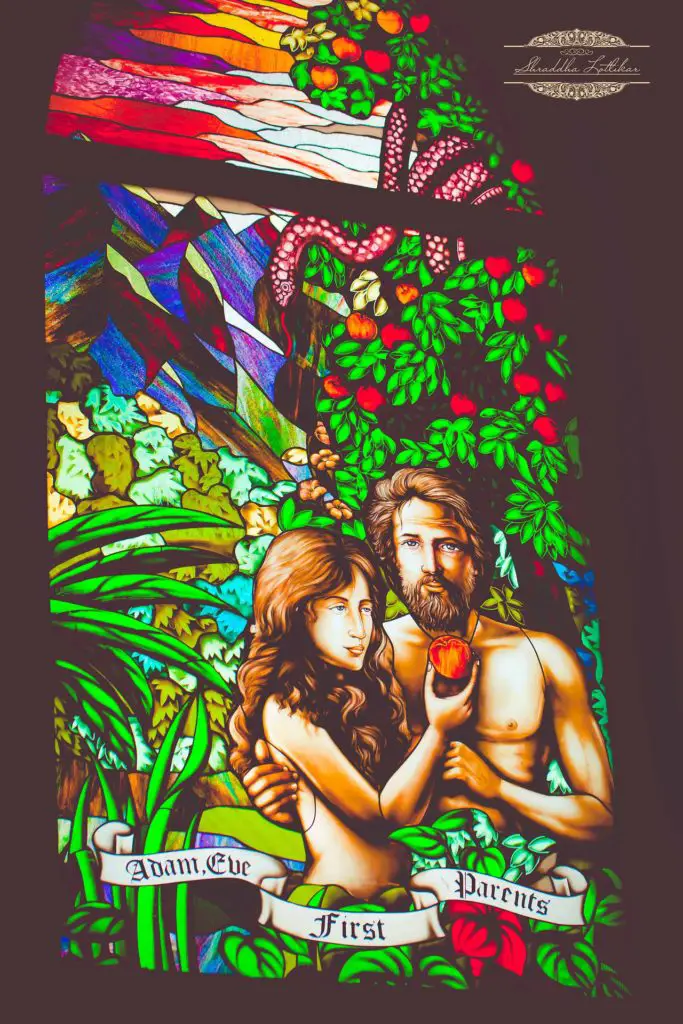
“And Adam called all the beasts by their names, and all the fowls of the air, and all the cattle of the field: but for Adam there was not found a helper like himself.
Then the Lord God cast a deep sleep upon Adam: and when he was fast asleep, he took one of his ribs, and filled up flesh for it.
And the Lord God built the rib which he took from Adam into a woman: and brought her to Adam.
And Adam said: This now is bone of my bones, and flesh of my flesh; she shall be called woman, because she was taken out of man.
Wherefore a man shall leave father and mother and shall cleave to his wife: and they shall be two in one flesh.
And they were both naked: to wit, Adam and his wife: and were not ashamed.” (Genesis 2:18–25)
When Man and Woman, Adam and Eve, committed their sin of disobedience and shame came upon them and they viewed their nakedness as such hence sin came into the world which we call Original Sin (see Genesis 3 the entire chapter). Therefore, the divine bond of marriage opened itself to societal corruption which we can read throughout the Old Testament and anytime in human history where we read about abuses of this bond and the sexual act that has been removed from the Marriage Institute where it belongs.
We just need to read 1 Kings 11: 1-5 on the number of wives and concubines that King Solomon took:
“And king Solomon loved many strange women, besides the daughter of Pharao, and women of Moab, and of Ammon, and of Edom, and of Sidon, and of the Hethites:
Of the nations concerning which the Lord said to the children of Israel: You shall not go in unto them, neither shall any of them come into yours: for they will most certainly turn away your hearts to follow their gods. And to these was Solomon joined with a most ardent love.
And he had seven hundred wives as queens, and three hundred concubines: and the women turned away his heart.
And when he was now old, his heart was turned away by women to follow strange gods: and his heart was not perfect with the Lord his God, as was the heart of David, his father. But Solomon worshipped Astarthe, the goddess of the Sidonians, and Moloch, the idol of the Ammonites.”
Again, we read King David had set up for the death of Urias the Hethite in order for him to fulfill his desires with Uriah’s wife Bathsheba daughter of Eliam, the wife of Uriah the Hittite, to who a child is born. However, God sends out a punishment on David for committing this evil in the form of the death of the baby. We read this in 2 Samuel 12: 7-18:
“And Nathan said to David: Thou art the man. Thus saith the Lord the God of Israel: I anointed thee king over Israel, and I delivered thee from the hand of Saul, And gave thee thy master’s house and thy master’s wives into thy bosom, and gave thee the house of Israel and Juda: and if these things be little, I shall add far greater things unto thee.
Why therefore hast thou despised the word of the Lord, to do evil in my sight? Thou hast killed Urias the Hethite with the sword, and hast taken his wife to be thy wife, and hast slain him with the sword of the children of Ammon.
Therefore, the sword shall never depart from thy house, because thou hast despised me, and hast taken the wife of Urias the Hethite to be thy wife.
Thus, saith the Lord: Behold, I will raise up evil against thee out of thy own house, and I will take thy wives before thy eyes and give them to thy neighbour, and he shall lie with thy wives in the sight of this sun.
For thou didst it secretly: but I will do this thing in the sight of all Israel, and in the sight of the sun. And David said to Nathan: I have sinned against the Lord. And Nathan said to David: The Lord also hath taken away thy sin: thou shalt not die.
Nevertheless, because thou hast given occasion to the enemies of the Lord to blaspheme, for this thing, the child that is born to thee, shall surely die.
And Nathan returned to his house. The Lord also struck the child which the wife of Urias had borne to David, and his life was despaired of.
And David besought the Lord for the child: and David kept a fast, and going in by himself lay upon the ground. And the ancients of his house came, to make him rise from the ground: but he would not, neither did he eat meat with them.
And it came to pass on the seventh day that the child died: and the servants of David feared to tell him, that the child was dead.” (2 Samuel 12: 7-18)
There are many further accounts on the abuses of the conjugal act throughout the Old Testament, but this was never the intention of God. We read this clearly in St Matthew’s Gospel as the Second Person of the Holy Trinity, the God-Man, elevated Marriage to it’s initial Sacramental status following the many abuses and bills of divorce that God allowed through the fact that man-kind had hardened his and her heart towards Him.
This is highlighted in the reference and reiterates Genesis 2 below:
“And there came to him the Pharisees tempting him, saying: Is it lawful for a man to put away his wife for every cause?
Who answering, said to them: Have ye not read, that he who made man from the beginning, made them male and female? And he said:
For this cause shall a man leave father and mother, and shall cleave to his wife, and they two shall be in one flesh. Therefore now they are not two, but one flesh. What therefore God hath joined together, let no man put asunder.
They say to him: Why then did Moses command to give a bill of divorce, and to put away?
He saith to them: Because Moses by reason of the hardness of your heart permitted you to put away your wives: but from the beginning it was not so. And I say to you, that whosoever shall put away his wife, except it be for fornication, and shall marry another, committeth adultery: and he that shall marry her that is put away, committeth adultery”. (St Matthew 19: 3-9)
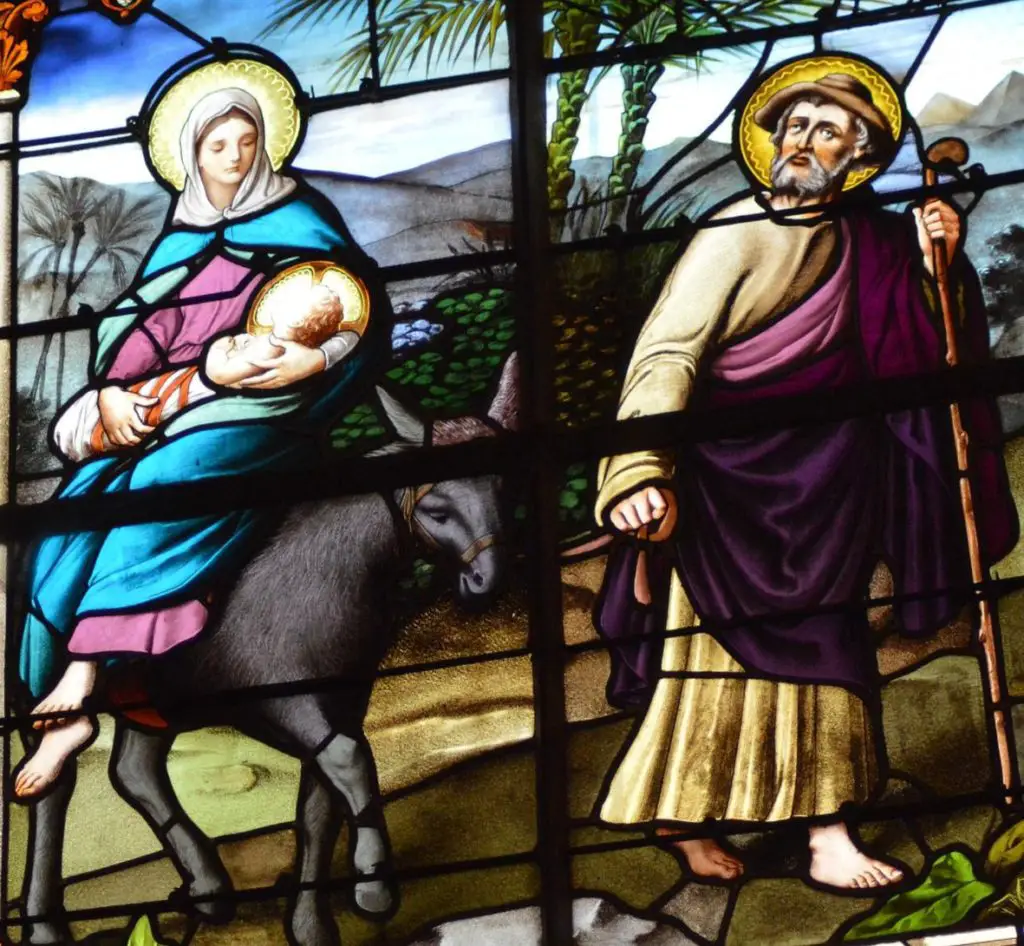
Why is marriage called a Sacrament of Service?
The Sacrament of Marriage is one of the two Sacrament in the Service of the community, the other being the Sacrament of Holy Orders. The Sacrament of Marriage was not only instituted by God through the creation of Woman as Man’s helper and re-instituted by Jesus but has the main task of brining into the world God’s children. This is evident in the instruction handed to Adam and Eve by God in Genesis,
“And God blessed them, saying: Increase and multiply, and fill the earth, and subdue it, and rule over the fishes of the sea, and the fowls of the air, and all living creatures that move upon the earth” (Genesis 1: 28).
Marriage is where the conjugal act belongs and is for the begetting of children. By God’s very design and creation of Woman from the side of man i.e. his ribs, He intended that they be one flesh, under a sacred institution and for the begetting of children, this is what is called Sacramental Marriage and a service to the community.
No where is the child (or children) safer than under the protection, instruction, nurturing and education than under the roof of a mother and father bound by Marriage and Grace by God as a Sacrament. When this marriage bond is broken or abused, society becomes corrupted. The Old Testament attest to this and in our world today there is no better example of this corruption of moral standards and the growth of immoral activity in all facets of life. This is not the purpose of the article, the sole purpose is to remind all of the sacredness of marriage, its true nature and that it has Sacramental status from the beginning.
What is the importance of marriage?
The importance of marriage is no better explained than in the Encyclical Casti Connubii, written by His Holiness Pope Pius XI in 1930. Casti Connubii which means ‘of chaste wedlock’ was written in response to the Anglican Lambeth Conference (1930) that caved into contraception within the marriage bond under specific circumstances.
The contraception era and the human laws surrounding contraception in the 1960s paced away for the abortion revolution which has seen millions of babies exterminated throughout the world. The sexual revolution challenged the marriage bond and these Encyclicals, written ahead of their time, are prophetic indeed. I would highly recommend reading this Encyclical and passing it on to those as a reminder of the importance, duties, and responsibilities of marriage.
Pope Pius XI of holy memory writes that:
“… the sacred partnership of true marriage is constituted both by the will of God and the will of man. From God comes the very institution of marriage, the ends for which it was instituted, the laws that govern it, the blessings that flow from it;
while man, through generous surrender of his own person made to another for the whole span of life, becomes, with the help and cooperation of God, the author of each particular marriage, with the duties and blessings annexed thereto from divine institution.” (Casti Connubii, 1930).
Notice, that the married couple consent and cooperate with the Divine Institute of marriage as provided by God, by its very nature.
Quoting St Augustine from Casti Connubii illustrates the blessings that God has attached to Marriage when he states:
“Are all the blessings of matrimony on account of which matrimony itself is a blessing; offspring, conjugal faith and the sacrament”
St Augustine further defines these three blessings as:
“By conjugal faith it is provided that there should be no carnal intercourse outside the marriage bond with another man or woman;
with regard to offspring, that children should be begotten of love, tenderly cared for and educated in a religious atmosphere;
finally, in its sacramental aspect that the marriage bond should not be broken and that a husband or wife, if separated, should not be joined to another even for the sake of offspring. This we regard as the law of marriage by which the fruitfulness of nature is adorned and the evil of incontinence is restrained.”
What is the teaching of the Roman Catholic Church on Sacramental Marriage?
The definition given above by St Augustine – Conjugal Faith; Betting of Children (offspring) and the education of the children; and Sacramental. Till death do you part, sums up the Catholic Church teaching on Marriage.
In paragraph 11, Casti Connubii we read:
“Thus, amongst the blessings of marriage, the child holds the first place. And indeed the Creator of the human race Himself, Who in His goodness wishes to use men as His helpers in the propagation of life, taught this when, instituting marriage in Paradise, He said to our first parents, and through them to all future spouses: “Increase and multiply, and fill the earth.”
As St. Augustine admirably deduces from the words of the holy Apostle Saint Paul to Timothywhen he says:
“The Apostle himself is therefore a witness that marriage is for the sake of generation: ‘I wish,’ he says, ‘young girls to marry.’ And, as if someone said to him, ‘Why?,’ he immediately adds: ‘To bear children, to be mothers of families’.”
Further in paragraph 13:“But Christian parents must also understand that they are destined not only to propagate and preserve the human race on earth, indeed, not only to educate any kind of worshippers of the true God, but children who are to become members of the Church of Christ, to raise up fellow-citizens of the Saints, and members of God’s household, that the worshippers of God and Our Savior may daily increase.”
What are the symbols of the Sacrament of Marriage?
St Paul and Pope Leo XIII in his Encyclical on Christian Marriage remind us on the role each is to play in marriage and the hierarchical set up of marriage, not as an institute of dominance nor abuse but of role, responsibility, obedience and ultimately love of the spouses for each other and their children.
“The man is the ruler of the family, and the head of the woman; but because she is flesh of his flesh and bone of his bone, let her be subject and obedient to the man, not as a servant but as a companion, so that nothing be lacking of honor or of dignity in the obedience which she pays. Let divine charity be the constant guide of their mutual relations, both in him who rules and in her who obeys, since each bears the image, the one of Christ, the other of the Church.”
Marriage is also a bond that can never be broken except through the death of one of the spouses. Another characteristic of Marriage is that it is Indissoluble when our Lord speaks of either of the spouse’s committing adultery and hence a bill of divorce. Our Lord enshrines the Indissolubility of marriage through His words:
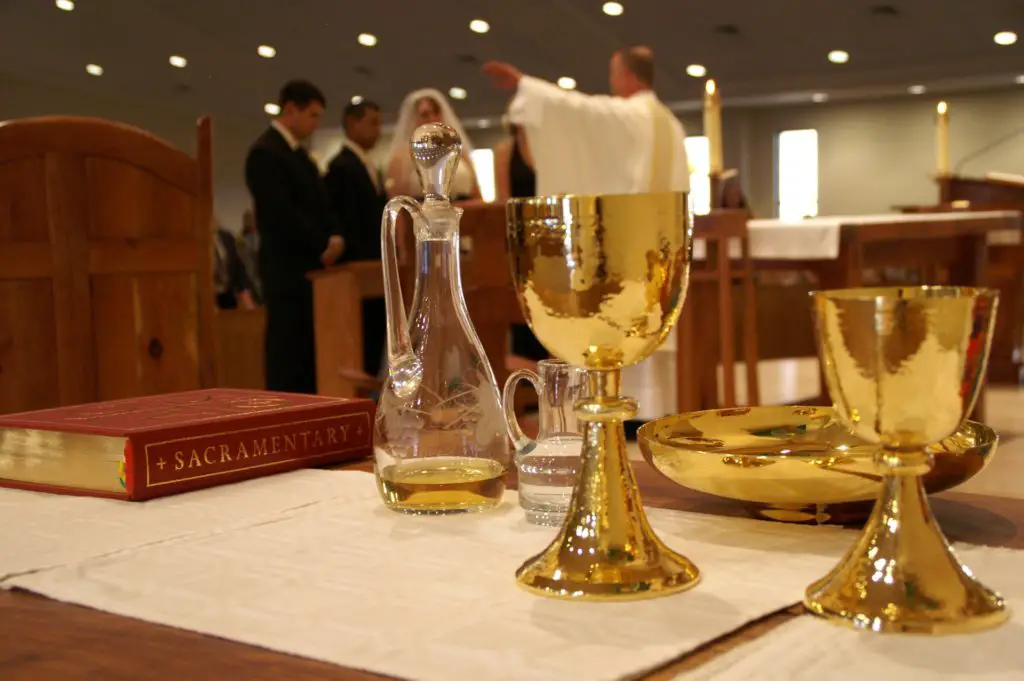
“What God hath joined together let no man put asunder,”
St. Augustine reaffirms the words of our Lord by stating that:“In the sacrament it is provided that the marriage bond should not be broken, and that a husband or wife, if separated, should not be joined to another even for the sake of offspring.”
What are the properties of a Sacramental Marriage?
The properties of the Sacrament of Marriage are 1) Unity, and 2) Indissolubility
- Unity – By unity it is meant that one man and one woman enter the bond of marriage. It is therefore both forbidden and not by the nature of marriage to have more than one woman for one man (Polygamy), nor more than one man for one woman (Polyandry).
- Indissolubility – marriage entered with the free consent of both parties is till death of either of the spouses. Therefore, divorce is forbidden in the Catholic Church. Divorce is harmful to the children, the man and woman and to the state, as we see in our society today.
What are the matter and form of a Sacramental Marriage?
The Matter and Form of the Sacrament of Marriage is the consent by the two parties.
The man and the woman enter the bond of Holy Matrimony representing Jesus (groom) towards His Church (the bridge).
The Sacramental Marriage gives to the man and woman an increase in Sanctifying Grace and Actual Grace to assist them during their life-long commitment.
Sacramental Marriage is contingent upon the requirement that both parties be baptised and in a state of Grace. Should one of the parties not fulfill this requirement, then the marriage is not sacramental.
What makes a Sacramental Marriage Valid and Licit?
Whilst the scope of this article is not to analyse every valid and/or licit Sacramental Marriage and the reasons for a marriage being dissolved or not, I would highly recommend consulting with your local Marriage Tribunal, or a Canon Lawyer or see the link below:
Here is a reference to the Catholic Church’s Canon Law Canos 1055 – 1165), click link:
https://www.vatican.va/archive/cod-iuris-canonici/eng/documents/cic_lib4-cann998-1165_en.html#TITLE_VII. In brief a valid and licit Sacramental Marriage must have the following properties:
What makes a Sacramental Marriage VALID?
- Baptised.
- State of Grace.
- Freely consenting.
- No Impediments.
- Before a Bishop, Priest, Deacon and two witnesses
What makes a Sacramental Marriage LICIT?
- The parties must be in a state of grace.
- They must be free from any impediments.
- They must be sufficiently instructed in their religion.
- They must observe the precepts laid down by the Church for the due celebration of marriage.
What is the Pauline Privilege?
The Pauline Privilege is taken from St Paul’s 1 Corinthians 7: 12-15. A marriage is dissolved when the two unbaptised couple of which one seeks to be baptised, whilst the unbaptised refuses to live with the newly baptised, the unbaptised can freely leave the marriage, hence the marriage is dissolved and the newly baptised is free to marry.
The Pauline Privilege dissolve a true natural marriage and differs from an annulment which states that the marriage never took place.“For to the rest I speak, not the Lord. If any brother hath a wife that believeth not and she consent to dwell with him: let him not put her away. And if any woman hath a husband that believeth not and he consent to dwell with her: let her not put away her husband. For the unbelieving husband is sanctified by the believing wife: and the unbelieving wife is sanctified by the believing husband. Otherwise, your children should be unclean: but now they are holy. But if the unbeliever depart, let him depart. For a brother or sister is not under servitude in such cases. But God hath called us in peace.”
What is the Petrine Privilege?
When a Baptised person marries an unbaptised person, a natural marriage exists and can be dissolved with a just reason, however the Privilege is for the Pope, hence the Petrine Privilege.
This is referenced in the Book of Ezra (see Ezra 10: 1-19) which has a precedence where some of the God believers had taken wives from non-believing lands, they were hence granted to leave or a bill of divorce following their repentance.
Like every institute or organisation, there are rules and regulations that surround its’ employers and members. Marriage is a divine institute and is governed by the Laws of God and fulfilled through the Sacrament of Marriage.
This article will not entertain the rules, laws and regulation surrounding the dissolution and/or annulment of marriage.
For more information, I highly encourage you to refer to your local Marriage Tribunal and/or Canon Lawyer. God be with you.

